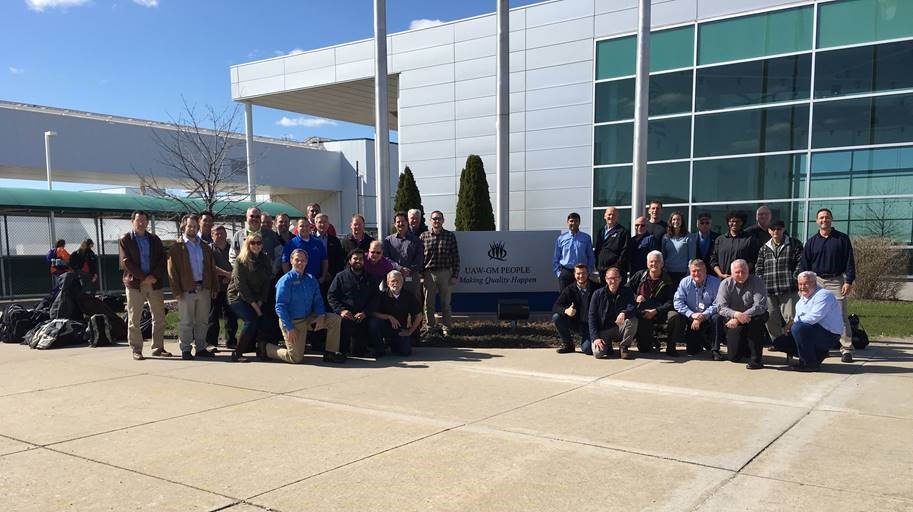INPLTs offered by the U.S. Department of Energy’s Better Plants program are multi-day workshops led by industry experts. INPLTs include both classroom and field-based training sessions that train the attendees to identify energy conservation opportunities, quantify savings from those opportunities, and implement projects to realize the energy and cost savings. These training workshops enhance the attendees’ understanding of working principles, knowledge of best practices, and capability of analyzing the energy performance of industrial energy/water systems. As of September 2020, the Better Plants program has hosted over 140 INPLTs with about 2,400 participants, helping to identify more than $41 million in energy cost savings opportunities. Due to COVID-19, some INPLTs are going virtual (VINPLTs) with convenient online delivery.
Water is a scare resource which, depending on the facility, can be a significant portion of the overall utility budget. With stricter water quality standards, scarcer water supplies, and growing water demand, it has become increasingly important for manufacturing sites to understand their water use and manage it deliberately. The Better Plants program has developed a special series of INPLTs for this purpose.
The Better Plants program will deliver virtual INPLTs for Industrial Water Efficiency (Industrial Water VINPLTs) from March 3 to April 21, 2022. The Water VINPLTs will be performed online by industrial water experts and energy efficiency experts. The Water VINPLTs comprise eight (8) 2.5-hour online training sessions (2-hours formal training and optional 0.5-hour Q&A) that will be delivered every Thursday 10:00 AM–12:30 PM ET for eight (8) consecutive weeks. Participating in the VINPLTs is free and open to all Better Plants partners.
Participants will be trained on water system fundamentals and undertake a facility-level water assessment, including hands-on training on the Plant Water Profiler (PWP) tool. To maximize the benefits from attending VINPLTs, homework assignments will be given to the participants at the end of each session and will be due by the next session. These homework assignments are designed to enhance participants’ understanding of industrial water systems, as well as to identify and quantify water savings opportunities. For the last session of the VINPLT, participants are expected to create a summary presentation based on the assessment of their facility, present findings, and share the scrubbed version with DOE.
At the completion of the VINPLT, Professional Development Hours (PDHs) Certificates will be prepared for the attendees upon request. Participants are expected to collect measurements/data from water using systems in their own facilities perform a water assessment and identify water efficiency opportunities with help from the instructors. To collect the assessment data, diagnostic equipment can be arranged and shipped to the partner’s facility. The Better Plants diagnostic equipment is available on a first-come, first-serve basis.
Mar 3 to Apr 21, 2022; Every Thursday 10:00 AM–12:30 PM ET (2-hour formal training + optional 0.5-hour Q&A)
Week 1 – Introduction to Industrial Water Assessment; Mar 3, 2022
The session will lay out the fundamentals of an industrial water assessment, water baselining and the true cost of water. Participants will learn to identify their facility’s water risk, chart out facility-level water flows, and be introduced to the Plant Water Profiler Tool (PWP).
Week 2 – Understanding System Level Water Use; Mar 10, 2022
This session will focus on system-level water use. Participants will be briefed on typical water using systems (industrial processes, cooling towers, boilers) and learn about the measurements needed to quantify its consumption. The software/hardware tools available through DOE to measure water consumption at a system level will be discussed.
Week 3 – True Cost of Water; Mar 17, 2022
Training experts will complete all remaining aspects of the water baselining activity and discuss the true cost of water in detail. Data collection challenges along with an overview of the measurements needed to determine the true cost of water through the PWP tool will be discussed.
Week 4 – PWP Tool: Working Session; Mar 24, 2022
Participants will work with the trainers to complete the water baseline and determine the true cost of water for their facility using the PWP tool. Nuances associated with the facility’s water flows will be discussed and the water imbalances will be ironed out for the facility.
Week 5 – Identifying Water Savings Opportunity; Mar 31, 2022
Training experts will discuss typical water savings opportunities in an industrial facility along with an in-depth look at the pumping, which plays an integral part in a facility’s water system. The checklists available through the PWP tool that helps users identify water savings opportunities will be reviewed. The water treasure hunt will be introduced.
Week 6 – Virtual Water Treasure Hunt; Apr 7, 2022
This session will equip the participants with the know-how to run a successful treasure hunt. Participants will perform a water treasure hunt of the facility with the help of on-site personnel and virtual guidance from the trainers.
Week 7 – Estimating Water Savings Opportunities; Apr 14, 2022
The water savings opportunities identified from the treasure hunt activity are discussed with the group. Participants will learn to quantify the savings associated with the identified opportunities using the appropriate calculators available through DOE.
Week 8 – Industrial Water Efficiency VINPLT Wrap-up Presentations; Apr 21, 2022
Over the past seven weeks, VINPLT attendees have been provided homework that focused on building their water assessment model in PWP and then quantify applicable water efficiency opportunities. Attendees will discuss the results from their virtual water system assessment and are encouraged to invite their upper management to attend the wrap-up session. Once completed, VINPLT attendees are given a Certification of Completion from US DOE.




 Kiran Thirumaran
Kiran Thirumaran